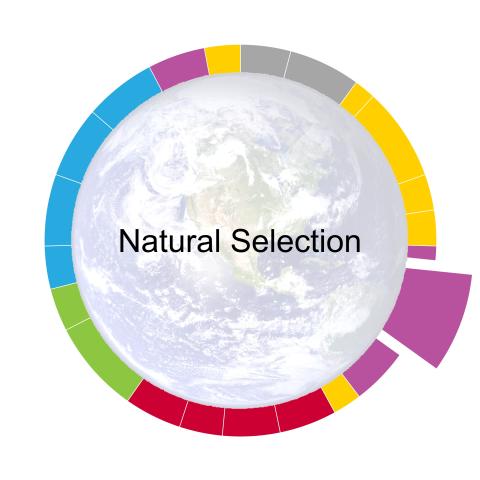
Phenomenon
In a population of organisms sometimes we see the distribution of traits changing over time. Specifically, we consider how bacteria have changed with regard to antibiotic resistance, how the frequency of certain peppered moths changed in pre/post industrial England, and how beak size changed in a population of finches on the Galapagos Islands.
Question
How do traits in a population change over time?
Model Ideas
The following ideas are the basis of Darwin's model of natural selection:
1. Populations have the potential to grow exponentially but they typically don't because of limited resources or environmental factors.
2. Variation in traits naturally exists in populations.
3. Depending on the environment, traits can be advantageous or disadvantageous.
4. Individuals with more advantageous traits are more likely to survive, and therefore, can reproduce.
5. Many traits are heritable, so offspring tend to resemble their parents.
6. In each generation the number born with the advantageous trait will increase and the number with the disadvantageous trait will decrease.
7. Over time the distribution of traits in the population will change.
Overview
In Unity & Diversity (UD), students generated some ideas about the breadth of diversity of life on Earth and the remarkable similarities that we see across species. They also observed how biodiversity has changed over eons.
In this triangle, natural selection (NS), students will begin to bring some of the ideas from UD to wonder about how traits change over time. Through observation and identification of a phenomenon–changes in traits across three unrelated species–and a data-driven activity focused on Galapagos Ground Finches, students will develop a model of natural selection that is similar to models synthesized by Charles Darwin and Ernst Mayr. They will then go on to apply and refine their model.
Download Resources
| Attachment | Size |
|---|---|
| Downloadable resources for Natural Selection vAug2021 | 58.02 MB |
| NS Finch Resources for LS 04.zip | 3.82 MB |